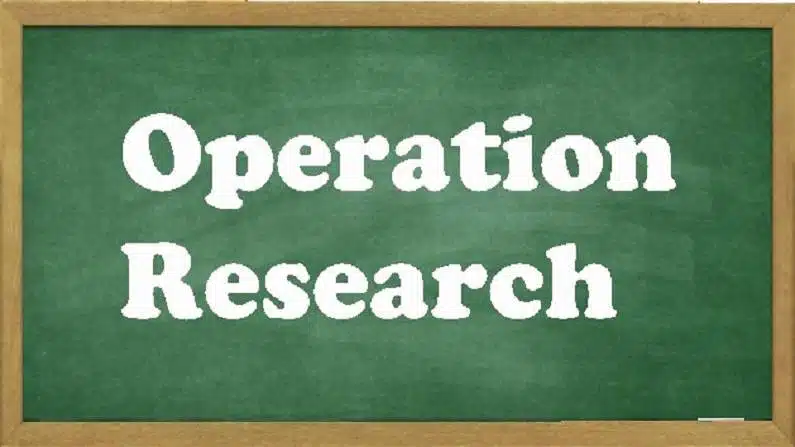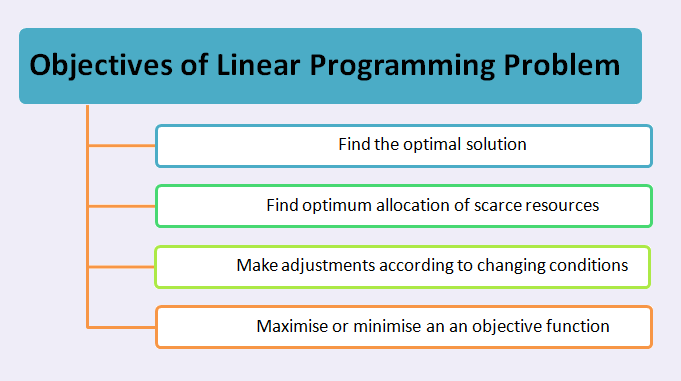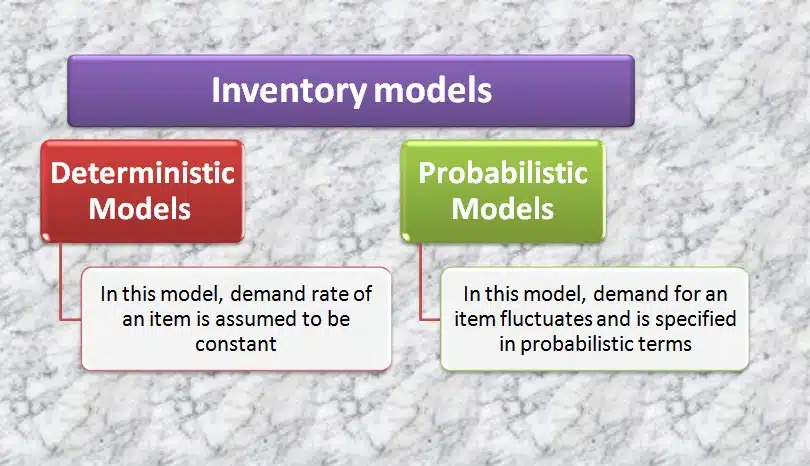
There is no unique set of problems that can be solved by using Operation Research models or techniques. Some of the important models or techniques used in Operation Research are as follows:
1. Allocation (Distribution) Models:
The resources or facilities are limited, which does not allow each activity to be performed in the best possible way. These models are concerned with the allotment of available resources so as to minimize cost or maximize profit subject to prescribed restrictions. Methods for solving such types of problems are known as mathematical programming techniques. We distinguish between linear and non-linear programming problems on the basis of linearity and non-linearity of the objective function and/or constraints respectively.
- In linear programming problems (LPP), the objective function is linear and constraints are also linear inequalities/equations. Transportation and Assignment models are special cases of LPP.
- In case the decision variables in an LPP are restricted to either integer or zero-one value, it is known as Integer and Zero-One programming problems, respectively.
- The problem having multiple, conflicting and incommensurable objective functions (goals) subject to linear constraints are called linear goal programming problems.
- If the decision variables in an LPP depend on chance, then such problems are called stochastic linear programming problems.
2. Inventory Models / Production Models:
It is used in determining when and how much production or purchase. Operation Research study involves balancing inventory costs against one or more of the following costs:
(i) Shortage costs. (ii) Ordering costs. (iii) Storage costs. (iv) Interest costs.
This study helps in making decisions about:
- How much to purchase.
- When to order.
- Whether to manufacture or to purchase i.e., make and buy decisions.
The most well-known use is in the form of the Economic Order Quantity equation for finding economic lot size.
3. Waiting Line (Queuing) Models:
In queuing models an attempt is made to predict:
- how much average time will be spent by the customer in a queue?
- what will be the average length of the waiting line or queue?
- What will be the traffic intensity of a queuing system? etc.
The study of waiting line problems provides us to minimize the sum of costs of providing service and cost of obtaining service which is primarily associated with the value of time spent by the customer in a queue.
4. Markovian Models:
These models are used in situations where various states of the system are defined and the system moves from one state to another on a probability basis.
5. Games Theory (Competitive Strategy Models):
Game theory is used for decision making under conflicting situations where there are one or more players. In the game theory, we consider two or more persons with different objectives, each of whose actions influence the outcomes of the game. The game theory provides solutions to such games, assuming that each of the players wants to maximize his profits and minimize his losses.
Methods for solving such models have not been found suitable for industrial applications, mainly because they are referred to an idealistic world neglecting many essential features of reality.
6. Network Models:
These models are an approach to planning, scheduling and controlling complex projects. Such large projects are very common in the field of construction, maintenance, computer system installation, research and development design, etc. PERT and CPM are used for planning, scheduling and controlling complex projects which can be characterized as networks.
7. Job Sequencing Models:
These models involve the selection of such a sequence of performing a series of jobs to be done on service facilities (machines) that optimize the efficiency measure of performance of the system. In other words, sequencing is concerned with such a problem in which efficiency measure depends upon the order or sequence of performing a series of jobs.
For example, consider a sequencing problem where n jobs are to be performed on m different machines. In such a case, our problem is to determine the sequence, which minimizes the total elapsed time. Here, the term elapsed time means the time from the start of the first job up to the completion of the last job.
8. Replacement Models:
These models deal with the determination of optimum replacement policy in situations that arise when some items or machinery need replacement by a new one.
9. Simulation Models:
Simulation is a very powerful technique for solving many complex models which cannot be solved otherwise and thus it is being extensively applied to solve a variety of problems. In fact, such models are solved by simulation techniques where no other method is available for its solution.
A Simulation Model is a mathematical business model which combines both mathematical and logical concepts that tries to emulate a real-life system through the use of computer software.
(Source – Various books of college library)
Copyrighted Material © 2019 - 2024 Prinsli.com - All rights reserved
All content on this website is copyrighted. It is prohibited to copy, publish or distribute the content and images of this website through any website, book, newspaper, software, videos, YouTube Channel or any other medium without written permission. You are not authorized to alter, obscure or remove any proprietary information, copyright or logo from this Website in any way. If any of these rules are violated, it will be strongly protested and legal action will be taken.



Be the first to comment